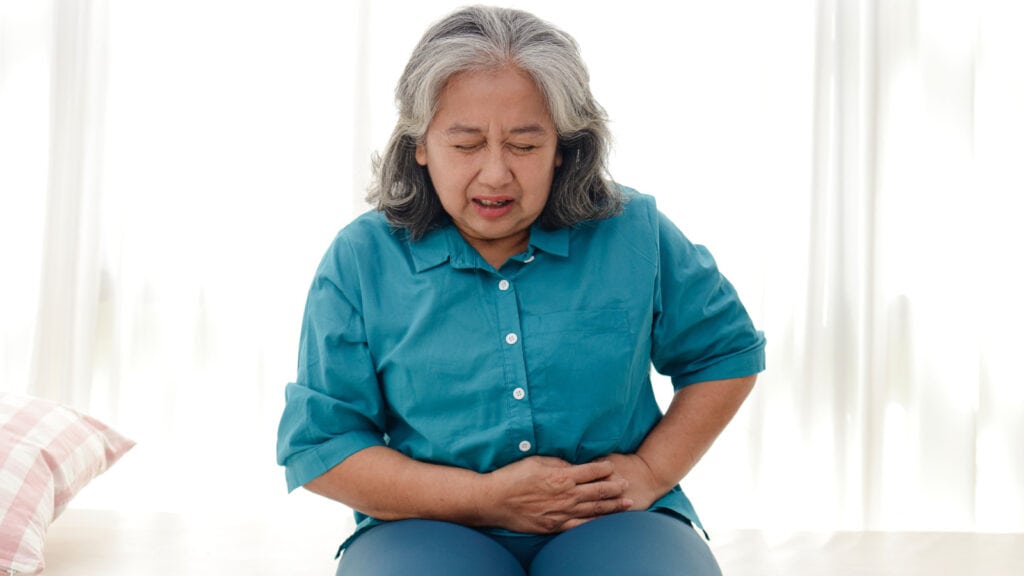10 Symptoms of Pancreatic Cancer You Don’t Want To Ignore
Pancreatic cancer is one of the deadliest forms of cancer, with a five-year survival rate of less than 10%. Often called a “silent killer,” it typically shows few early symptoms, making it challenging to detect until it has reached an advanced stage. According to the American Cancer Society, over 62,000 new cases of pancreatic cancer will be diagnosed in the United States in 2024, with nearly 50,000 deaths. This article identifies 10 symptoms of pancreatic cancer that Americans frequently overlook and provides direct links to authoritative sources for more detailed information. Understanding these signs can help raise awareness and potentially lead to earlier diagnosis.
1. Unexplained Weight Loss

One of the first signs of pancreatic cancer is sudden, unexplained weight loss. This can occur because the cancer impacts the body’s ability to digest nutrients, leading to malnutrition. The Mayo Clinic highlights that unexpected weight loss should always be investigated, especially if it happens alongside other symptoms like fatigue or changes in appetite.
2. Yellowing of the Skin and Eyes (Jaundice)

Jaundice, characterized by yellowing of the skin and eyes, is a common symptom of pancreatic cancer, particularly if the tumor obstructs the bile duct. The American Cancer Society warns that jaundice may develop without accompanying pain, making it easy to overlook.
3. Dark Urine

Dark urine is another indicator of jaundice and can be an early sign of pancreatic cancer. According to Johns Hopkins Medicine, dark urine occurs when excess bilirubin, a substance produced by the liver, builds up in the blood.
4. Light-Colored or Greasy Stools

Pancreatic cancer can block the bile duct, preventing bile from reaching the intestines. As a result, stool may appear light-colored or greasy. The American Cancer Society states that this symptom, often ignored, can be a warning sign of cancer-related digestive issues.
5. New-Onset Diabetes

Pancreatic cancer can interfere with the pancreas’s ability to produce insulin, leading to new-onset diabetes. This is particularly concerning when diabetes develops suddenly in a person who does not have other risk factors. The CDC advises individuals to monitor blood sugar levels and seek evaluation if there are unexpected changes.
You may want to read: 10 Symptoms Of Diabetes You Don’t Want To Miss
6. Abdominal or Back Pain

Persistent abdominal or back pain is a common symptom that many people attribute to muscle strain or gastrointestinal issues. The pain often occurs when the tumor presses on surrounding organs or nerves. The Cleveland Clinic recommends paying close attention to this type of pain, especially if it worsens over time.
7. Loss of Appetite

Loss of appetite can be an early sign of pancreatic cancer, as the tumor may disrupt the digestive process. According to the American Society of Clinical Oncology (ASCO), many people with pancreatic cancer report feeling full quickly or losing interest in eating altogether.
8. Nausea and Vomiting

Nausea and vomiting can result when a pancreatic tumor presses against the stomach, causing blockages. The Pancreatic Cancer Action Network notes that this is a symptom that people often dismiss as a minor stomach issue, but it could be a sign of a more serious underlying condition.
9. Enlarged Gallbladder or Liver

In some cases, a pancreatic tumor may cause the gallbladder or liver to become enlarged. This may be detected through imaging tests or felt as a mass under the right side of the ribcage. The American Gastroenterological Association advises seeking medical evaluation for any unusual masses or swelling.
10. Fatigue

Fatigue is a common, non-specific symptom of many health conditions, but it can also be a sign of pancreatic cancer. The American Cancer Society suggests that fatigue accompanied by other symptoms, such as unexplained weight loss or abdominal pain, should be promptly evaluated.
Conclusion

Pancreatic cancer is often diagnosed at a late stage because its symptoms are subtle and easily overlooked. Recognizing these warning signs and seeking medical advice when they occur could help with early detection and improve outcomes. If you or a loved one experience any of these symptoms, consult a healthcare provider immediately. By staying vigilant and informed, individuals can improve their chances of catching this aggressive cancer early on.
Confusing Heart Attack Warning Signs in Women: 12+ Symptoms You Should Not Ignore!

Heart attacks, or myocardial infarctions, are critical medical emergencies where the blood supply to a part of the heart is suddenly blocked, usually by a blood clot. While heart attacks are commonly associated with men, they are a significant health risk for women as well. In fact, heart disease is the leading cause of death for women in many parts of the world, surpassing even breast cancer. Understanding how to detect a heart attack, why women are susceptible, and the relevant statistics is crucial for improving outcomes and saving lives.
READ: Confusing Heart Attack Warning Signs in Women: 12+ Symptoms You Should Not Ignore!
Why More Young Adults Are Experiencing Strokes

Stroke rates in younger adults (under 50) have been increasing, while rates in older adults have shown different trends. Several sources have highlighted this trend. Here is some data to consider: READ: Why More Young Adults Are Experiencing Strokes
Women Are At Far Higher Risk For Dementia Than Men. Why?

Studies show that women are more likely to develop dementia than men. In fact, twice as many women suffer from Alzheimer’s disease, the most common form of dementia. This higher risk is partly because women tend to live longer than men, and age is a major factor in dementia. However, whether women face a greater risk at the same age as men is still up for debate among researchers. READ: Women Are At Far Higher Risk For Dementia Than Men. Why?
Join Us

Join us on this empowering journey as we explore, celebrate, and elevate “her story.” The Queen Zone is not just a platform; it’s a community where women from all walks of life can come together, share their experiences, and inspire one another. Welcome to a space where the female experience takes center stage. Sign up for our newsletter so you don’t miss a thing, Queen!







